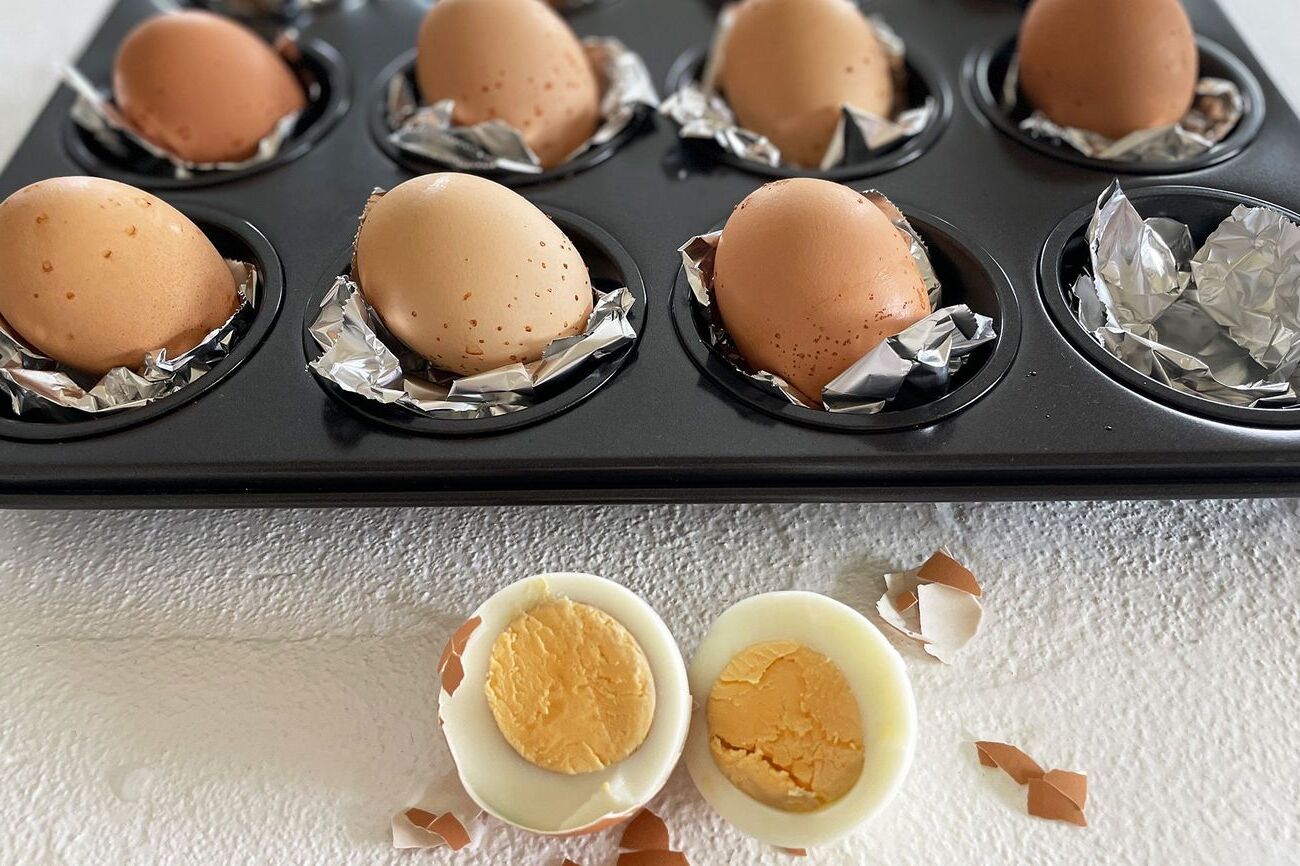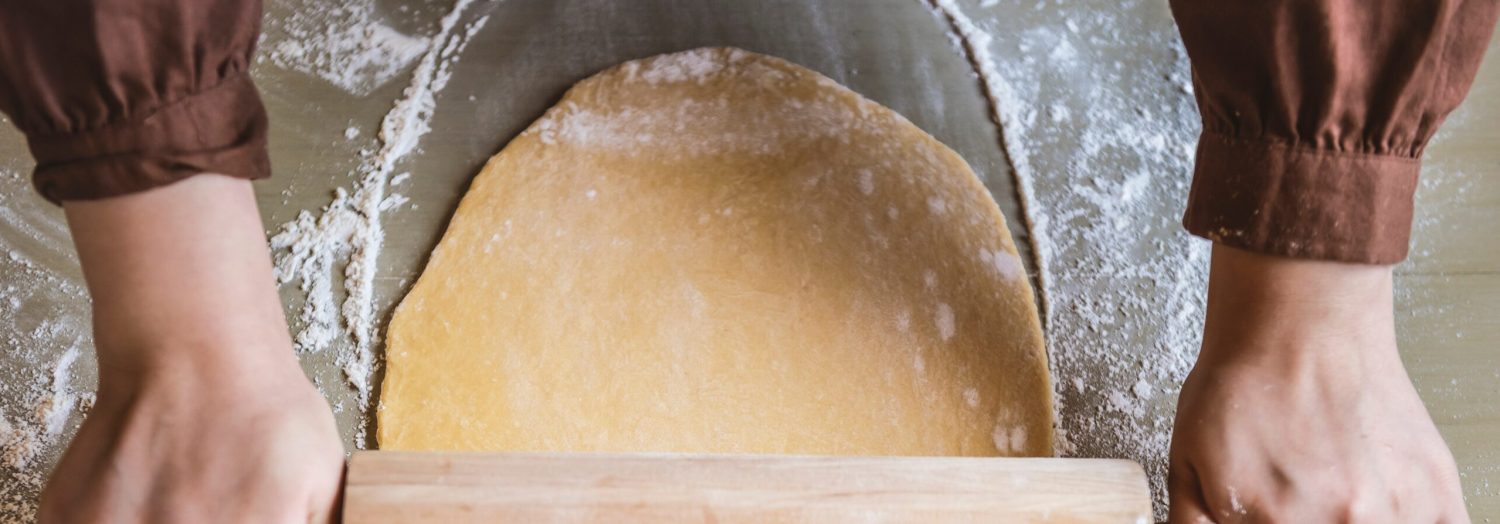Hard boiled eggs are a versatile and nutritious addition to any meal. This oven-baked method ensures perfectly cooked eggs every time, with minimal effort. Whether you're preparing them for breakfast, a salad, or a quick snack, this recipe will become a staple in your kitchen.
The only ingredient you need for this recipe is eggs. Make sure to use large eggs for consistent results. If you don't have a muffin tin, you might need to purchase one, as it helps keep the eggs in place while baking.

Ingredients For Hard Boiled Eggs In The Oven Recipe
Eggs: The main ingredient, providing protein and essential nutrients. Make sure to use large eggs for this recipe.
Technique Tip for Making Hard Boiled Eggs in the Oven
To ensure your eggs are easy to peel, add a teaspoon of baking soda to the ice water bath. This helps to loosen the shells and makes peeling a breeze.
Suggested Side Dishes
Alternative Ingredients
Eggs - Substitute with tofu: Tofu can be seasoned and baked to mimic the texture and protein content of hard-boiled eggs.
Eggs - Substitute with chickpea flour batter: When baked, chickpea flour batter can create a similar texture to eggs and is a good source of protein.
Eggs - Substitute with silken tofu: Silken tofu can be blended and baked to achieve a similar consistency to hard-boiled eggs, making it a good vegan alternative.
Alternative Recipes Similar to Oven-Baked Hard Boiled Eggs
How to Store or Freeze Oven-Baked Hard Boiled Eggs
- Allow the hard boiled eggs to cool completely before storing. This helps prevent condensation, which can lead to spoilage.
- Once cooled, place the eggs in an airtight container. This will keep them fresh and prevent them from absorbing any odors from the fridge.
- Store the container in the refrigerator. Hard boiled eggs can be safely stored in the fridge for up to one week.
- If you prefer, you can peel the eggs before storing. This makes them more convenient for quick snacks or adding to salads and sandwiches.
- For freezing, peel the eggs first. This prevents the shells from becoming rubbery and difficult to remove after thawing.
- Place the peeled eggs in a single layer on a baking sheet and freeze until solid. This prevents them from sticking together.
- Transfer the frozen eggs to a freezer-safe bag or container. Label with the date to keep track of freshness.
- When ready to use, thaw the eggs in the refrigerator overnight. Avoid thawing at room temperature to prevent bacterial growth.
- Use thawed eggs in egg salads, deviled eggs, or as a protein-packed addition to soups and stews.
- Note that the texture of frozen and thawed eggs may be slightly different, but they remain safe and delicious for various recipes.
How to Reheat Leftovers
Stovetop Method:
- Fill a saucepan with enough water to cover the eggs.
- Bring the water to a gentle simmer over medium heat.
- Carefully place the eggs into the simmering water using a slotted spoon.
- Let the eggs warm up for about 3-5 minutes.
- Remove the eggs from the water and let them cool slightly before peeling and enjoying.
Microwave Method:
- Place the eggs in a microwave-safe bowl.
- Fill the bowl with enough water to cover the eggs.
- Add a pinch of salt to the water to prevent the eggs from exploding.
- Microwave on medium power for 1 minute.
- Check the eggs and continue microwaving in 15-second intervals until they are warmed through.
- Let the eggs cool slightly before peeling and enjoying.
Oven Method:
- Preheat your oven to 250°F (121°C).
- Place the eggs in a muffin tin or on a baking sheet.
- Warm the eggs in the oven for about 10 minutes.
- Remove the eggs from the oven and let them cool slightly before peeling and enjoying.
Steaming Method:
- Fill a pot with about an inch of water and bring it to a boil.
- Place a steamer basket in the pot.
- Add the eggs to the steamer basket.
- Cover the pot and steam the eggs for about 3-5 minutes.
- Remove the eggs from the steamer basket and let them cool slightly before peeling and enjoying.
Best Tools for Making Hard Boiled Eggs in the Oven
Oven: Used to bake the eggs at a consistent temperature of 325°F (163°C).
Muffin tin: Holds each egg in place while they bake in the oven.
Bowl: Used to hold the ice water for cooling the eggs after baking.
Ice water: Cools the eggs quickly to stop the cooking process and make peeling easier.
Tongs: Helps to safely remove the hot eggs from the muffin tin and place them into the ice water.
Timer: Ensures precise baking and cooling times for perfectly cooked eggs.
How to Save Time on Making Oven-Baked Hard Boiled Eggs
Preheat efficiently: Start preheating the oven while you gather your eggs and muffin tin to save time.
Use a timer: Set a timer for both the baking and the ice water bath to ensure perfect hard boiled eggs without constant checking.
Batch preparation: Cook a dozen eggs at once and store them in the fridge for quick meals throughout the week.
Peeling hack: Gently crack the eggs before placing them in the ice water to make peeling easier and faster.

Hard Boiled Eggs in the Oven Recipe
Ingredients
Main Ingredients
- 12 large Eggs
Instructions
- Preheat your oven to 325°F (163°C).
- Place one egg in each cup of a muffin tin.
- Bake in the preheated oven for 30 minutes.
- Remove eggs from the oven and immediately place them in a bowl of ice water for 10 minutes.
- Peel and enjoy your perfectly cooked hard boiled eggs.
Nutritional Value
Keywords
More Amazing Recipes to Try 🙂
- Pasta Salad with Dressing Recipe25 Minutes
- Ground Chicken Burgers Recipe25 Minutes
- Beef Short Ribs Recipe3 Hours 20 Minutes
- Hash Brown and Egg Casserole Recipe1 Hours
- Iced Coffee Recipe5 Minutes
- Brain Hemorrhage Halloween Drink Recipe5 Minutes
- Indian Butter Chicken Recipe1 Hours
- Avocado Egg Salad Recipe20 Minutes

Leave a Reply